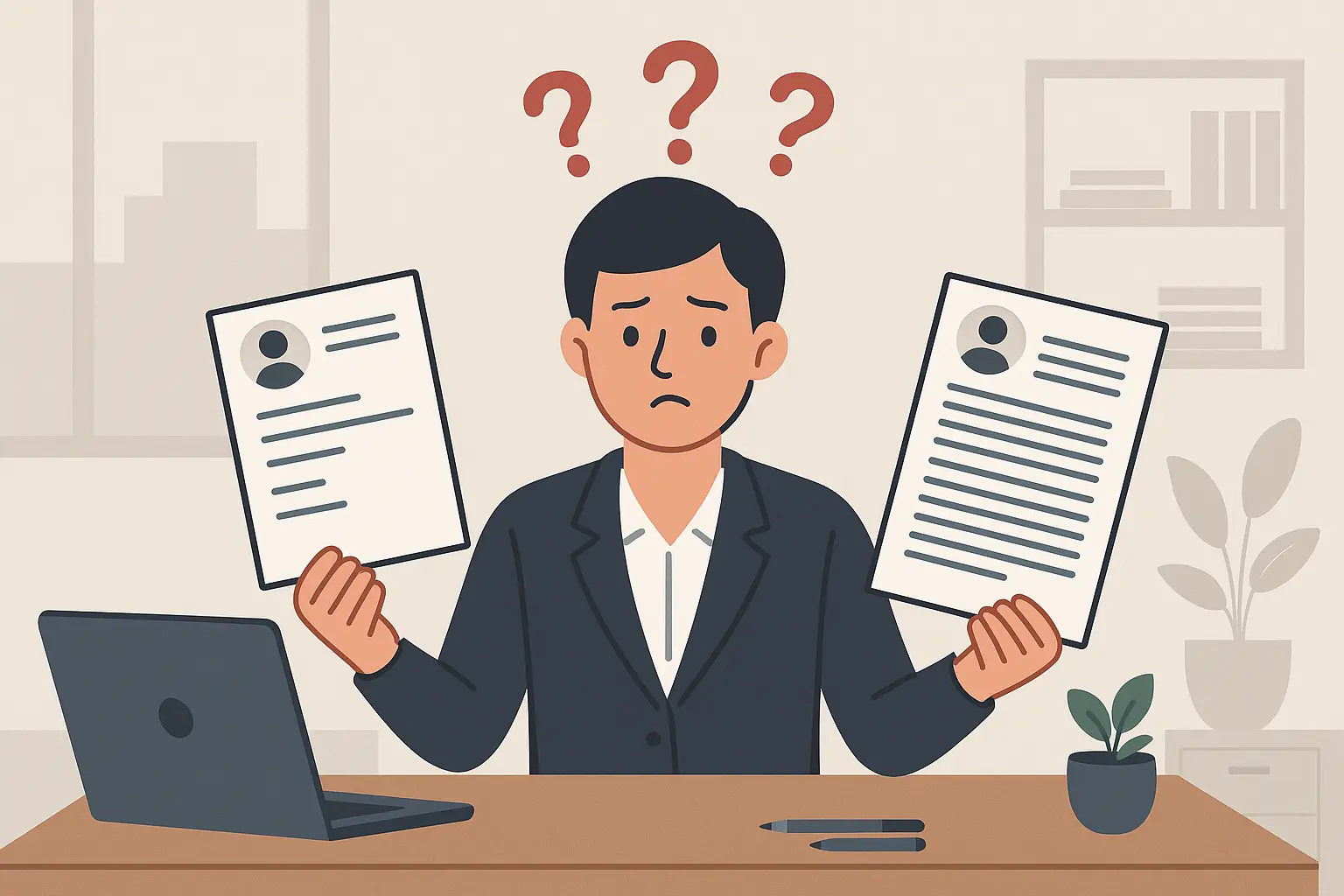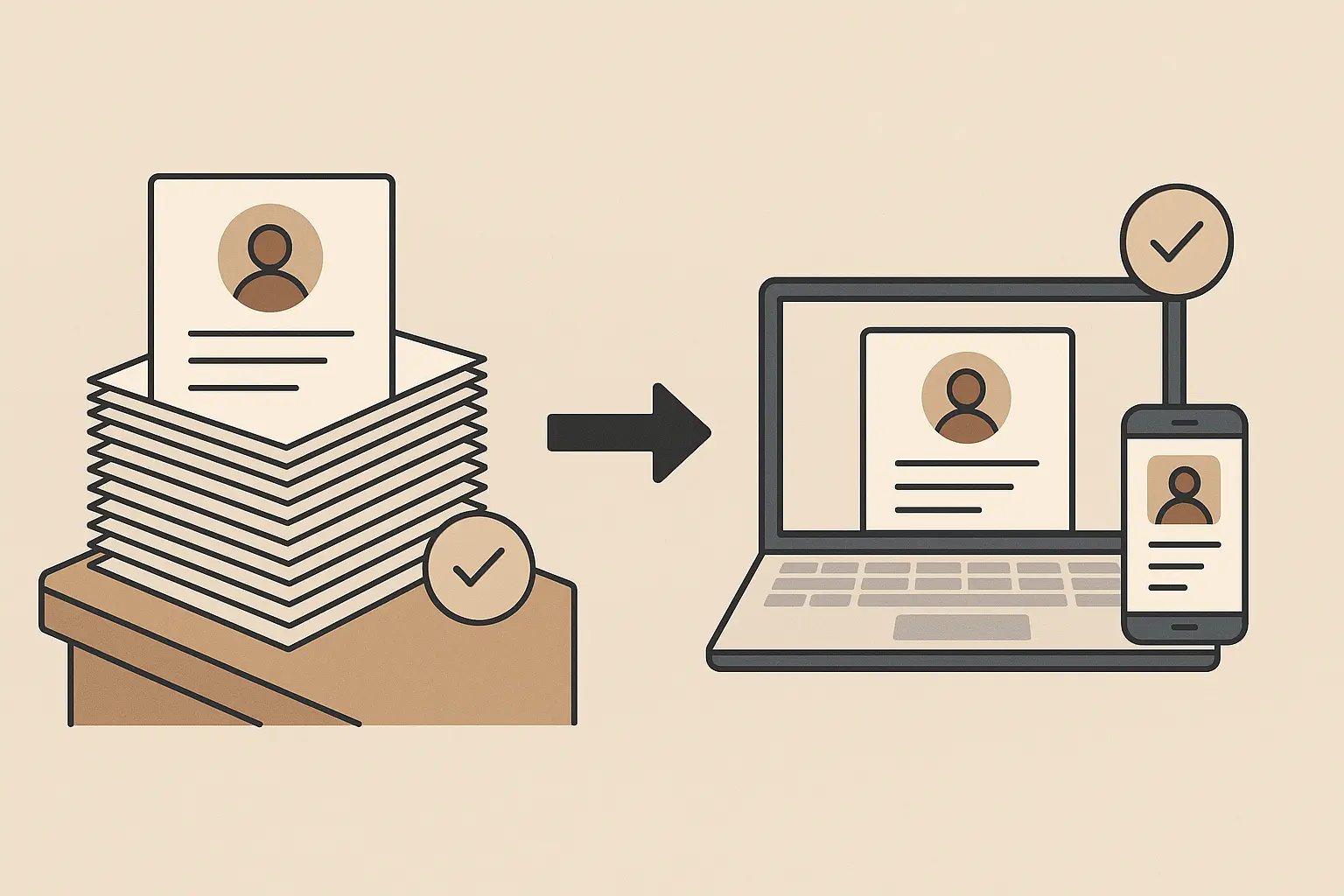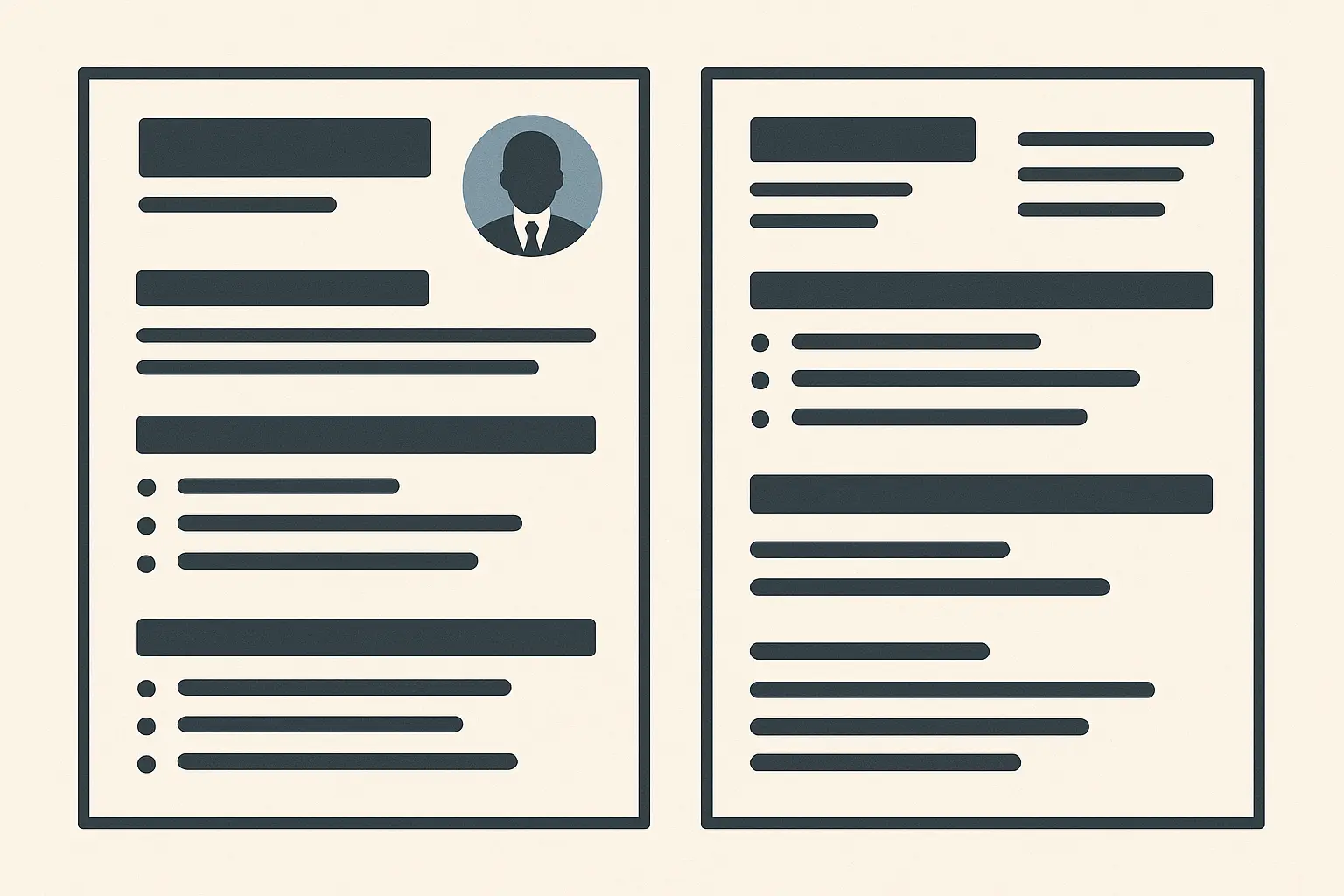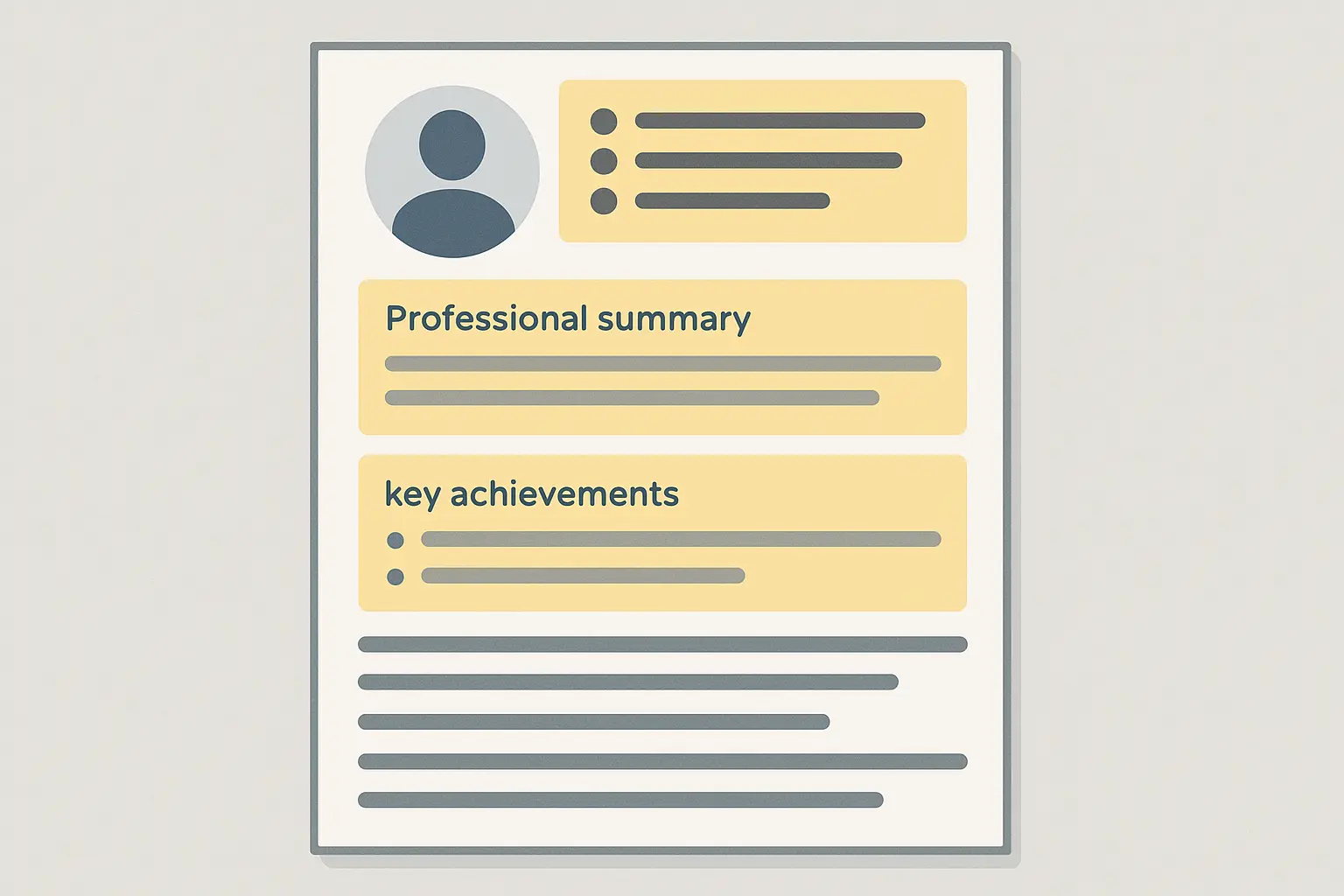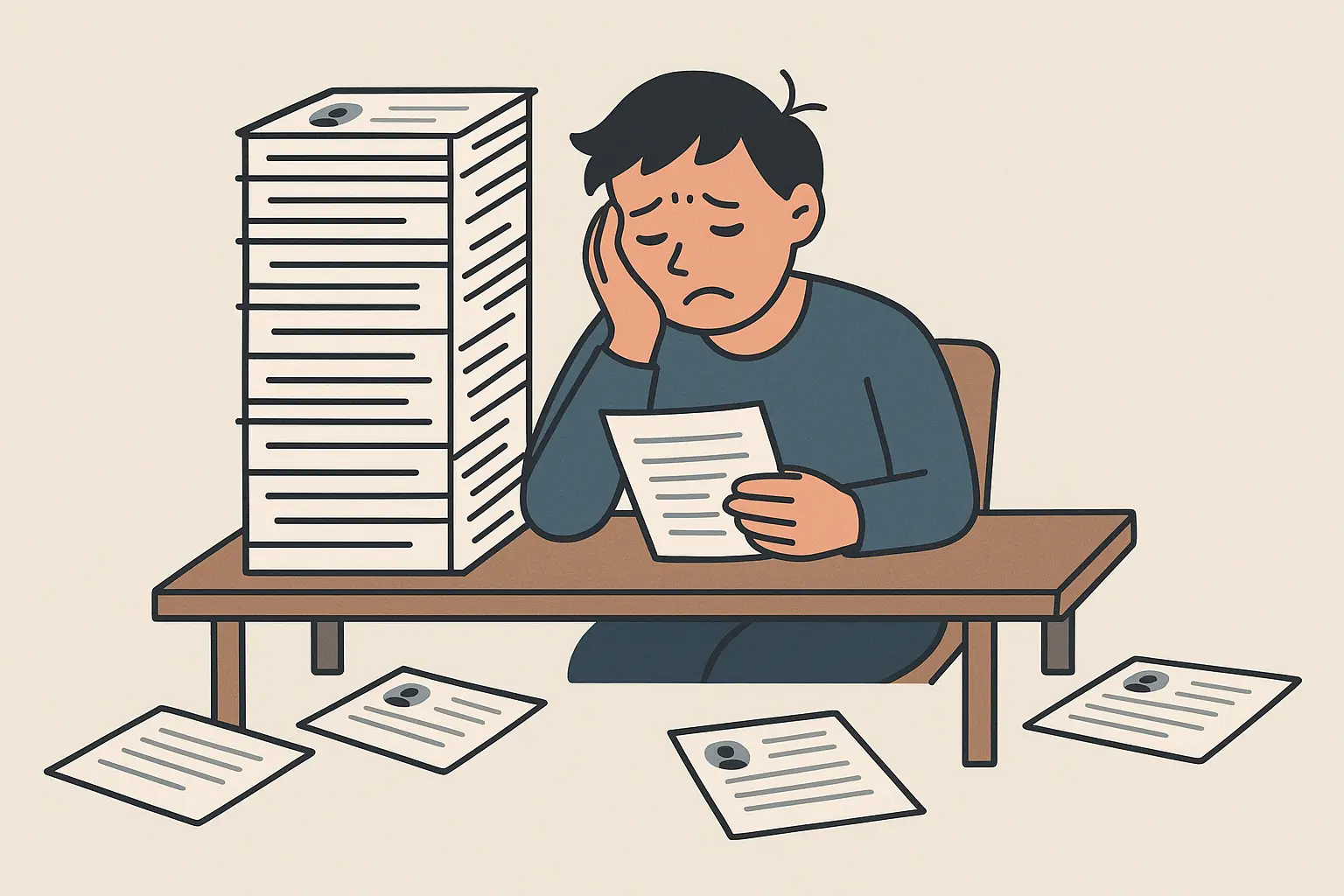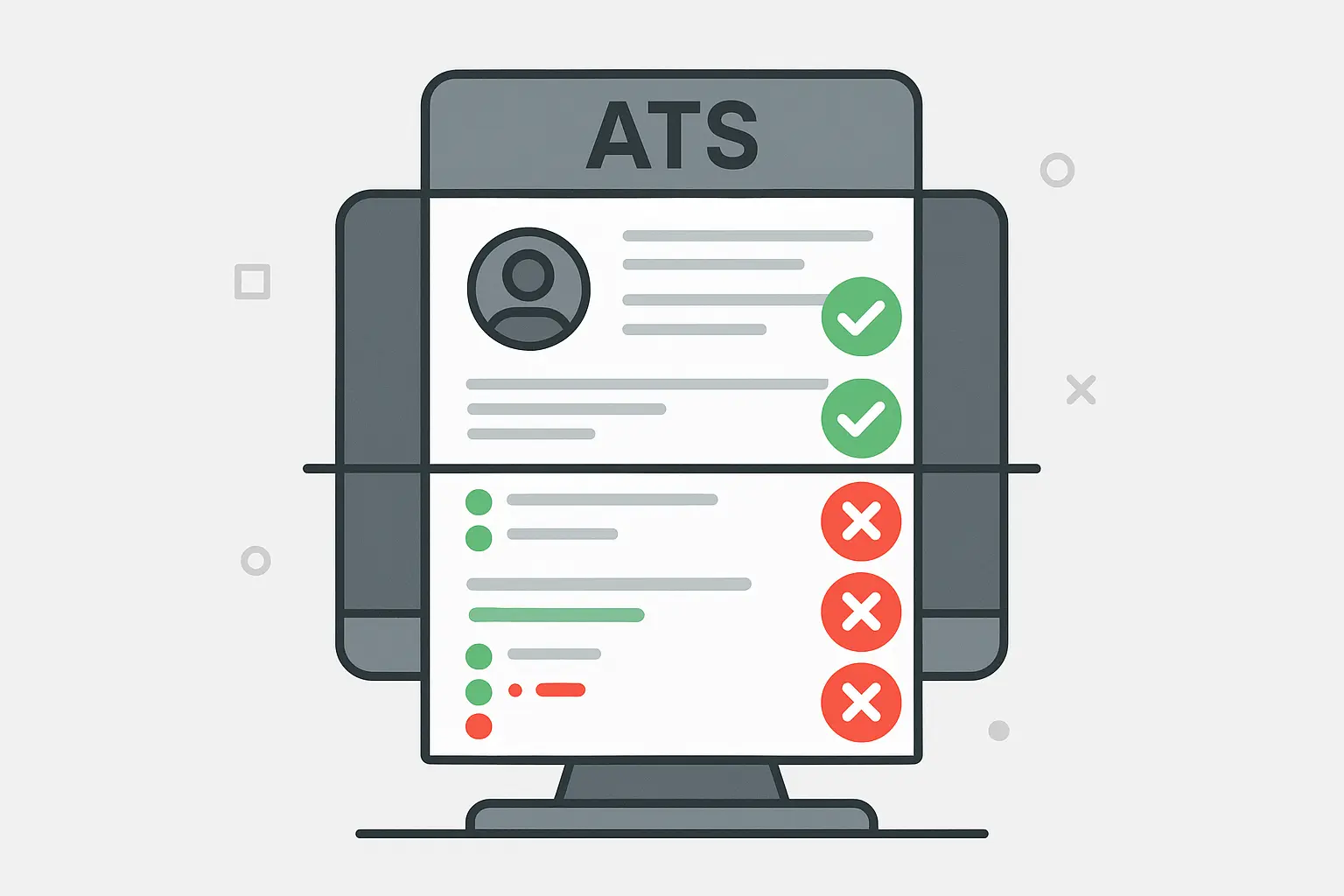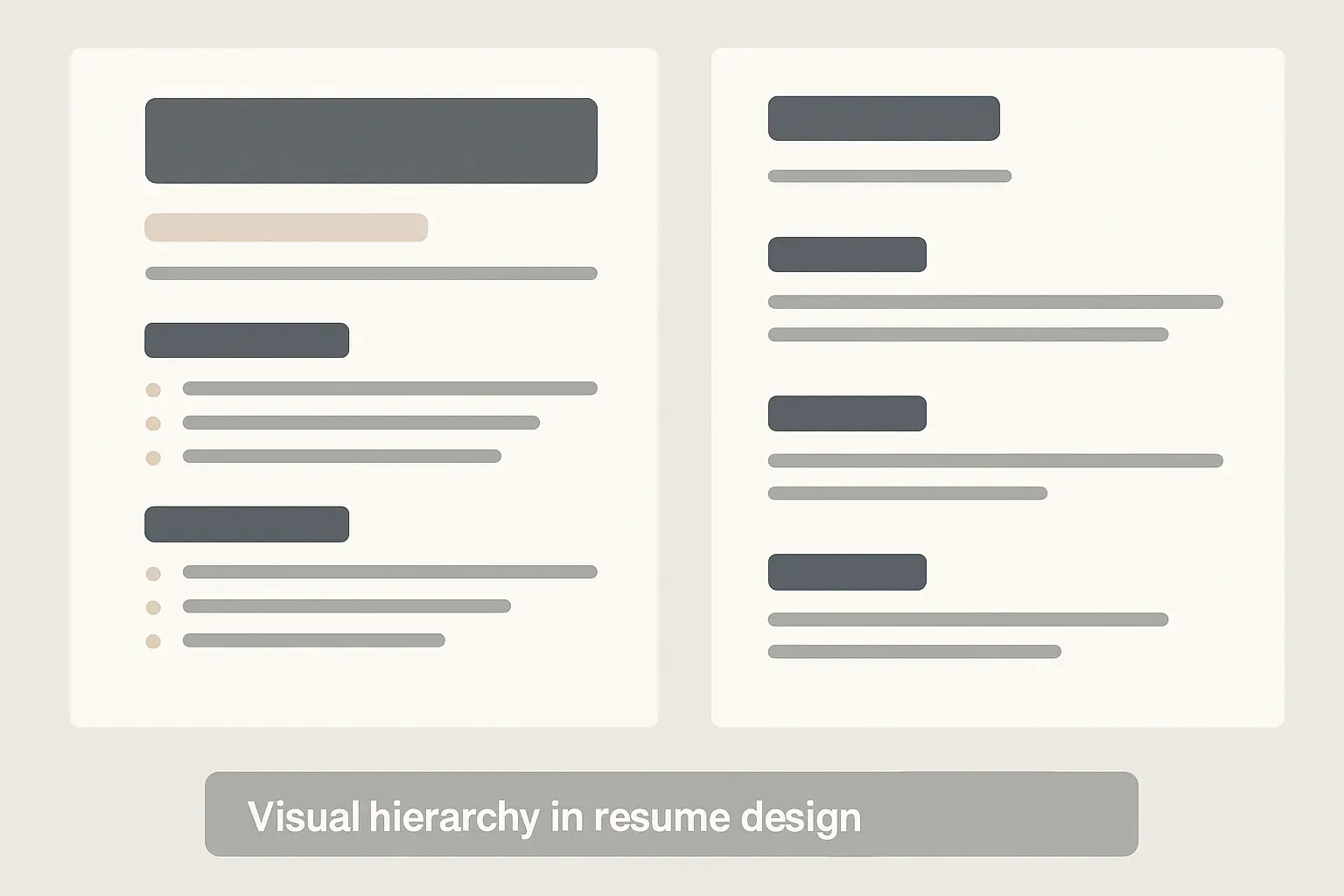Should a Resume Be One Page? The Truth About Resume Length That Could Make or Break Your Job Search
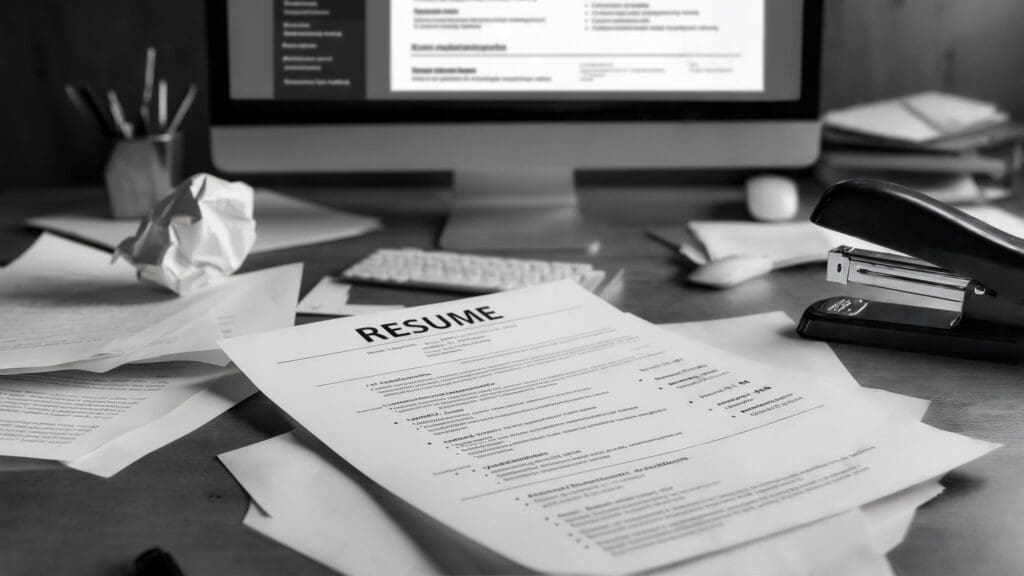
Let me guess – you’re staring at your resume right now, wondering if you should delete that awesome project from 2019 just to fit everything on one page. Stop. Take a breath. That “one-page rule” everyone talks about? It’s basically career advice from the 1990s.
Here’s what drives me crazy: I see talented people literally shrinking their font to 10pt just to squeeze 15 years of experience onto one page. Why? Because someone once told them it was “the rule.”
But here’s the thing – with the average resume containing 489 words and recruiters spending mere seconds on initial reviews, maybe we’re asking the wrong question. Instead of “How do I cram everything onto one page?” try “How do I tell my story in the most compelling way possible?”
After reviewing thousands of applications, I can tell you this rigid thinking might actually be sabotaging your job search. Let’s fix that.
Table of Contents
-
Why the One-Page Rule is Dead
-
When Two Pages Actually Help
-
Why Three Pages Never Work
-
How to Pick the Right Length
TL;DR
-
The one-page resume rule died with fax machines and filing cabinets
-
Two-page resumes are not just okay – they’re often better for experienced professionals
-
Three-page resumes are career suicide (with rare exceptions)
-
Your experience level and industry should determine length, not outdated rules
-
Good content beats arbitrary page limits every single time
-
Modern hiring managers care about results, not following ancient formatting commandments
Why the One-Page Rule is Dead
Want to know something that’ll blow your mind? A recent study found that recruiters are actually 2.9 times more likely to choose candidates with two-page resumes for management roles. Yep, the exact opposite of what we’ve been told.
The one-page rule comes from a time when hiring managers had literal stacks of paper on their desks. Back then, longer resumes meant more filing space, higher copying costs, and paperwork that could literally topple over.
But guess what? We don’t live in that world anymore.
When considering whether to expand beyond one page, it’s crucial to understand the professional resume format that works best for your industry and experience level.
According to TeamStage research, recruiters are 2.9 times more likely to choose candidates with two-page resumes for managerial positions and 1.4 times more likely for entry-level positions. This completely flips the traditional one-page mandate on its head.
The Real Story Behind This “Rule”
The one-page resume standard wasn’t created by career experts or hiring professionals. It came from filing cabinets.
Think about it – back in the day, HR departments needed uniform document sizes. Copying was expensive. Storage was physical. A hiring manager might literally have 200 printed resumes stacked on their desk, and anything longer than one page was a logistical nightmare.
So the rule stuck. Career counselors passed it down like gospel, without ever questioning whether it still made sense when everything went digital.
What Hiring Managers Actually Think
Here’s what surprised me when I started talking to hiring managers: most don’t actually count pages. They’re looking for relevant information that helps them make decisions.
Sarah, a tech recruiter in Austin, told me: “I don’t care if it’s one page or two. I care if I can quickly see why this person is perfect for the role.”
Modern hiring managers spend more time on resumes that clearly show value, whether that story takes one page or two to tell. The shift is from arbitrary length restrictions to content that actually matters.
A recent “Figuring out how much job experience to present on a resume” MassLive analysis confirms that the one-page rule is antiquated and hasn’t existed for over a decade, with hiring managers typically preferring to see 10-15 years of experience rather than artificially compressed career summaries.
Different Industries, Different Rules
Here’s the thing nobody talks about – industries have completely different tolerance levels for resume length. And ignoring this can kill your chances.
Creative fields want to see your portfolio work and detailed project descriptions. Tech roles need extensive skill lists, certifications, and project details. Meanwhile, some traditional corporate environments still lean toward brevity (though even this is changing).
|
Industry |
What Actually Works |
What They Want to See |
|---|---|---|
|
Technology |
1-2 pages |
Technical skills, certifications, project details |
|
Creative/Marketing |
1-2 pages |
Portfolio links, campaign results, creative achievements |
|
Finance/Banking |
1-2 pages |
Quantified results, regulatory knowledge, leadership experience |
|
Healthcare |
1-2 pages |
Certifications, continuing education, specialized procedures |
|
Academia/Research |
2-3 pages |
Publications, research projects, grant funding |
|
Government |
2-3 pages |
Detailed project descriptions, security clearances, compliance |
When Two Pages Actually Help
Two-page resumes aren’t just acceptable – they’re often more effective than their cramped one-page counterparts. I’ve seen professionals land interviews specifically because their two-page format let them tell a complete story.
The key is knowing when you’ve earned the right to use that extra space.
Before deciding on a two-page format, check out our comprehensive resume 2 pages guide that breaks down exactly when and how to make this choice.
You’ve Earned Two Pages If…
Once you hit the 7-10 year mark in your career, cramming everything onto one page often does more harm than good. Here’s when two pages make sense:
-
You’re a senior professional with leadership experience
-
You’re in a technical role with multiple certifications and complex projects
-
You’re changing careers and need space to connect the dots
-
You have quantifiable achievements that deserve proper explanation
If you’re using 10-point font and razor-thin margins just to fit everything, you’re probably underselling yourself.
The Cramped One-Page Disaster:
-
“Managed team (2019-2023)”
-
“Increased sales”
-
“Led projects”
The Strategic Two-Page Win:
-
“Led cross-functional team of 12 professionals across marketing, sales, and product development, resulting in 23% faster product launches (2019-2023)”
-
“Increased regional sales by 34% YoY through implementation of data-driven customer segmentation strategy, generating $2.1M in additional revenue”
-
“Spearheaded digital transformation initiative that reduced operational costs by $2.3M annually while improving customer satisfaction scores by 28%”
See the difference? The two-page version actually shows impact instead of just listing responsibilities.
The Senior Professional Reality Check
Here’s something counterintuitive: senior-level candidates actually benefit from demonstrating their ability to organize information across two pages. It shows strategic thinking and prioritization skills.
Hiring managers expect senior professionals to have substantial accomplishments. A well-structured two-page resume signals that you have the experience to back up your seniority level.
Technical Roles Need Space
Technical professionals often get screwed by the one-page constraint because their value lies in specific skills and detailed project outcomes.
Software developers need space for programming languages, frameworks, and significant projects. Engineers must highlight complex problem-solving scenarios. Healthcare professionals require room for certifications and specialized procedures.
Research from SkillHub shows that 63% of recruiters prefer resumes personalized to the job position, making detailed technical information more valuable than arbitrary length restrictions.
How to Structure Two Pages Like a Pro
The biggest mistake with two-page resumes? Treating them like extended one-page documents.
Your first page needs to function as a standalone document that could secure an interview even if page two disappeared. This means front-loading your most impressive achievements and ending page one with content that naturally leads into page two.
Make Page One Irresistible
Your first page should contain everything a hiring manager needs to decide you’re worth a phone call:
-
Contact information and compelling professional summary
-
Most recent and relevant positions
-
Strongest achievements with quantifiable results
-
Skills that directly match the job requirements
Think of page one as your elevator pitch in document form – it needs to grab attention and create momentum.
To maximize your first page impact, make sure you’re using an ATS-friendly resume format that both systems and humans can easily read.
Page Two: The Supporting Evidence
Page two provides the supporting evidence that transforms interest into action. This might include:
-
Earlier career positions that show progression
-
Additional skills and certifications
-
Education details and relevant training
-
Supplementary achievements that reinforce your value
Every section should feel essential, not like filler content.
Why Three Pages Never Work
I’ll be direct: three-page resumes almost never work in your favor. After reviewing thousands of applications, the three-page versions consistently perform worse.
The problem isn’t just length – it’s what happens to your content when you stretch it across three pages. Your strongest points get diluted, hiring managers lose interest, and you end up including information that actually weakens your application.
A recent “Get rid of the resume: One page can’t tell your story” Cornell Sun opinion piece argues that traditional resume formats are fundamentally flawed, though most hiring professionals still recommend strategic two-page approaches over lengthy alternatives.
The Three-Page Death Spiral
Three-page resumes suffer from what I call “content dilution syndrome.” When you have three pages to fill, you inevitably include:
-
Weaker achievements from years ago
-
Outdated experiences that don’t matter
-
Irrelevant details just to justify the length
This dilutes your strongest qualifications and makes it harder for hiring managers to identify why they should care about you.
Most recruiters report losing interest after page two, which means your third page often goes completely unread.
According to TeamStage statistics, only 2-3% of sent resumes result in an interview, making it crucial to front-load your strongest content rather than diluting it across excessive pages.
The Rare Exceptions
Academic positions, research roles, and certain government positions sometimes require extensive publication lists or detailed project portfolios that genuinely need additional space.
But even then, many professionals find success with targeted two-page resumes supplemented by separate research portfolios or publication lists.
Before committing to three pages, honestly ask yourself: does every piece of information strengthen my case, or am I just filling space?
How to Pick the Right Length
Choosing the right resume length isn’t about following universal rules – it’s about making smart decisions based on your unique situation.
Here’s my framework for figuring out what works for you.
Understanding the fundamentals of what to put on resume content will help you make informed decisions about which achievements deserve space.
The Keep It or Cut It Test
List all your potential resume content, then evaluate each item based on two simple criteria:
-
Is this relevant to my target roles?
-
Does this demonstrate measurable impact?
High-relevance, high-impact items earn prime real estate on page one. Medium items might justify page two if you have strong content. Everything else gets cut, regardless of how much space you have.
|
Career Stage |
What Usually Works |
Focus On |
Don’t Do This |
|---|---|---|---|
|
Entry-Level (0-3 years) |
1 page |
Education, internships, relevant projects |
Padding with irrelevant experience |
|
Mid-Level (3-8 years) |
1-2 pages |
Career progression, quantified achievements |
Including every job responsibility |
|
Senior-Level (8-15 years) |
2 pages |
Leadership impact, strategic initiatives |
Listing jobs without showing results |
|
Executive (15+ years) |
2 pages |
Business transformation, P&L responsibility |
Including ancient roles without current relevance |
Show Results, Not Responsibilities
Every line on your resume should either demonstrate measurable impact or provide essential context. Revenue generated, costs saved, team sizes managed, project timelines, and performance improvements all deserve space because they prove your value.
Basic job duties without measurable outcomes? Cut them.
Weak (Just Lists Stuff You Did):
-
“Responsible for social media management”
-
“Handled customer service inquiries”
-
“Participated in team meetings”
Strong (Shows What You Achieved):
-
“Increased Instagram engagement by 127% and follower growth by 45% through data-driven content strategy”
-
“Resolved 95% of customer inquiries within 24 hours, achieving 4.8/5 satisfaction rating”
-
“Contributed to cross-functional product development team that launched 3 features, increasing user retention by 23%”
The difference between these approaches often determines whether you need two pages or can nail it in one.
Career Changers Need More Space
If you’re switching industries or roles, you might need extra space to connect the dots between your past experience and future goals.
Career changers face unique challenges that don’t fit standard experience-based guidelines. You need room to translate transferable skills and explain how your background applies to new opportunities.
I’ve seen successful career transitions that required two pages specifically to bridge the gap while maintaining credibility about their professional journey.
High Achievers Earn Extra Space
Some people pack more significant accomplishments into five years than others achieve in fifteen. If you’ve consistently delivered measurable results, led major initiatives, or driven substantial business impact, you’ve earned the right to use additional space.
Don’t shortchange impressive achievements just to meet an arbitrary page limit.
Quick Decision Checklist
Ask yourself these questions:
-
Can I fit all my relevant achievements on one page without using tiny fonts?
-
Do I have 7+ years of progressive experience worth showcasing?
-
Are my accomplishments quantified with specific metrics?
-
Does my industry expect detailed technical information?
-
Am I changing careers and need space to explain transferable skills?
-
Would cutting content weaken my value proposition?
-
Is every line actually helping my case?
If you answered “no” to the first question and “yes” to several others, two pages probably makes sense.
Technical Stuff That Actually Matters
Regardless of length, your resume needs to work with applicant tracking systems and human reviewers. This means:
-
Standard fonts (Arial, Calibri, Times New Roman)
-
Clear section headings
-
Consistent formatting throughout
-
Save as both Word doc and PDF for compatibility
ATS systems handle multi-page documents just fine, but they struggle with creative layouts and unusual fonts. Focus on clean, professional presentation that enhances readability.
For optimal compatibility across all systems, consider using our chronological resume format which provides the clearest structure for both ATS parsing and human review.
Keep It Simple for Systems
Modern ATS systems are smart, but they still work best with straightforward formatting:
-
Use standard section headings like “Professional Experience” and “Education”
-
Avoid tables, text boxes, and graphics that confuse parsing
-
Keep your contact information on both pages if using two pages
-
Use consistent bullet points and spacing
These technical considerations matter more than creative design elements that might look cool but cause parsing errors.
The Biggest Mistake with Longer Resumes
Here’s what kills longer resumes: including weaker content just because you have space to fill.
I’ve seen two-page resumes that would have been stronger as one page because the second page contained outdated experiences, irrelevant skills, or minor achievements that actually hurt the overall impact.
Every additional line should strengthen your case, not just provide more information about your background.
How Recruiters Actually Read Resumes
Understanding how hiring professionals review resumes helps you structure longer documents more effectively. Most recruiters scan the first page quickly, then decide whether to invest time in the rest.
If your first page doesn’t create momentum, subsequent pages won’t save you. This should influence how you prioritize and organize content across multiple pages.
Final Thoughts
The question “should a resume be one page” doesn’t have a universal answer because careers aren’t universal. Your resume length should reflect your professional story, not outdated formatting rules from the filing cabinet era.
Here’s what really matters: hiring managers are looking for reasons to interview you, not reasons to reject your application. A well-crafted two-page resume that showcases relevant achievements will always beat a cramped one-page document that buries your best qualifications in tiny fonts.
The most successful job seekers treat resume length as a strategic decision, not a rigid constraint. They evaluate their experience, consider their target roles, and choose the format that best serves their career goals.
So stop stressing about page counts and start focusing on telling your story in the most compelling way possible. Whether that takes one page or two, make every word count.

